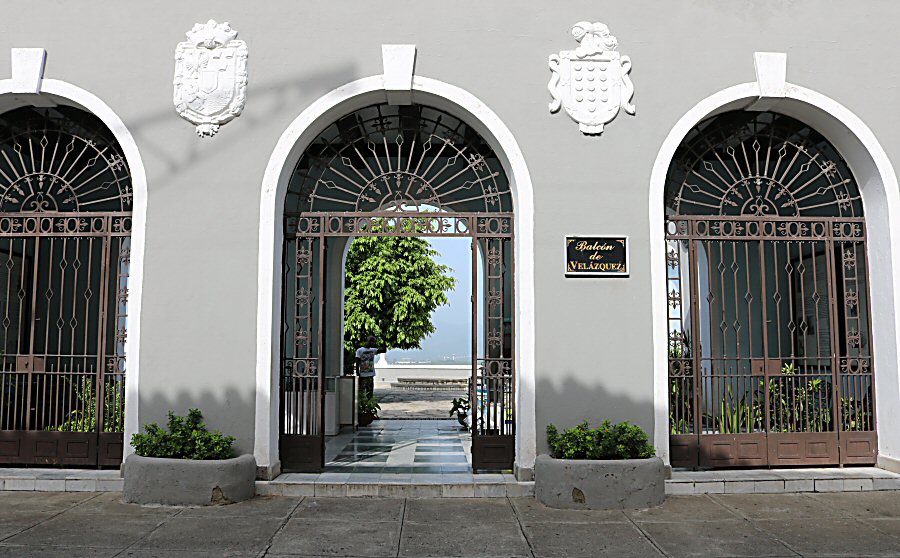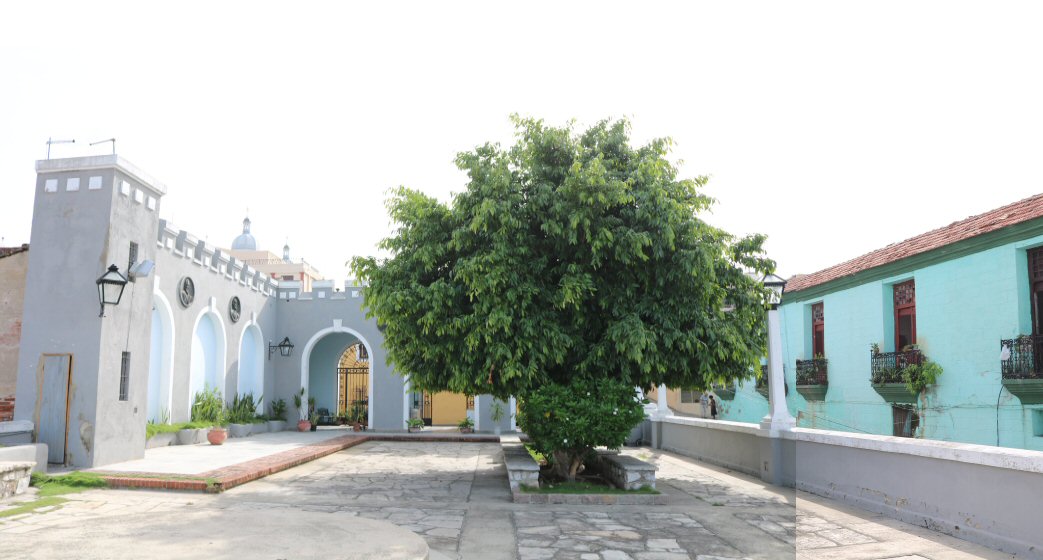The fort known as the Balcón de Velázquez lies on the west to the Parque Céspedes, one block down the street Heredia, on the Corona Street where it connects with Bartolomé Masó street. It limits the neighborhood Tivolí.
Tuesday-Saturday 09:00 - 18:00
Sunday 09:00-12:00


The defense system of Santiago de
Cuba was very weak, when the city was founded, because there was
not any military construction that could control the bay. In the
place where the castle stands today, a wooden tower was erected
that was used for several years only to monitor the traffic of
the ships and to warn the city against the surprise attacks of
the corsairs and pirates. After many reports on the need for the
fortification of the city on military basis, Hernando de Soto
personally started to construct this fort in 1539, when he
arrived in Santiago de Cuba as the Governor of Cuba and
Adalantado of Florida at the end of 1538 (adalantado was a
military title held by some Spanish conquistadores of the 15th
- 17th centuries). The building process was interrupted several
times due to the uprising of the native Indians in Santiago de
Cuba, as money and personal dedicated to this goal were diverted
to repress the natives of the areas around Santiago de Cuba,
such as Baracoa, Baitiquiri etc. Faced with such difficulties,
the construction of the fort (El Fuerte de Hernando de Soto) was
completed in 1550. It was built as the lookout point for
incoming ships. It was originally equipped with cannons facing
out over the bay. Over the centuries, the fort underwent
different adaptations, such as the construction of a house in
the 18th century. During the American intervention on the island
in the beginning of the 20th century, it was converted into
barracks, and later it became a part of the school La Salle. It
was renovated as balcony in 1950 and inaugurated in 1953. Last
renovation was in 1997. Current Santiagueros call this bastion
Balcón de Velázquez in memory of the founder of the city.

Due to the dominant position of the
fort on the bay, its extensive flat terrace with a flat roof
provides one of the most seductive views of the city over the
ramshackle, red-tiled rooftops down towards the bay and the ring
of mountains beyond. The first bastion in Santiago de Cuba
reaches a height of about 8 meters along the Bartolomé Masó
Street. The entrance is through three arcades on the Corona
Street. The building has a façade with military
appearance. Although only some of the original walls remained,
the current, renovated construction has integrated them, and the
effect is equally rewarding. The interior walls of the courtyard
are adorned with large bronze medallions of some prestigious men
that have an important place in the history of the city: Guamá,
a Taíno chief who led a rebellion against Spanish rule
in Cuba in the 1530s, Diego Velázquez, the founder of the town,
Hernán Cortés, the first mayor of the town, and Fray Bartolomé
de Las Casas, the protector of the Indians.
On the other hand, the most intriguing feature is
the tunnel that can be entered from beneath the circular
platform in the center of the patio. It runs for less than 1 km
down to the seafront. Presumably it was constructed for the
townspeople to use it as a swift exit under any siege. The
entrance of the tunnel is covered with writings about the
history of Santiago de Cuba and the honorary plaques that belong
to some influential dignitaries. Currently, the entrance and the
exit of the tunnel are closed.
Nowadays, some artistic and cultural
activities are organized in this place, such as theaters,
musicals and fashion shows.